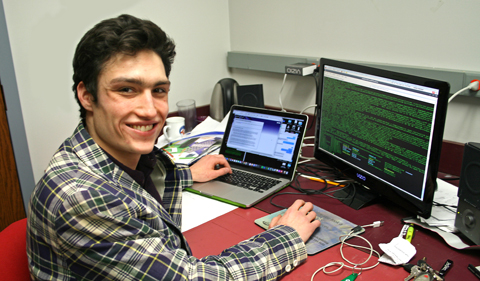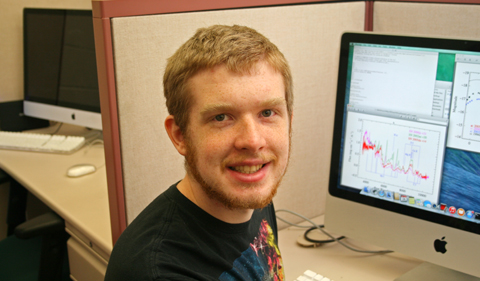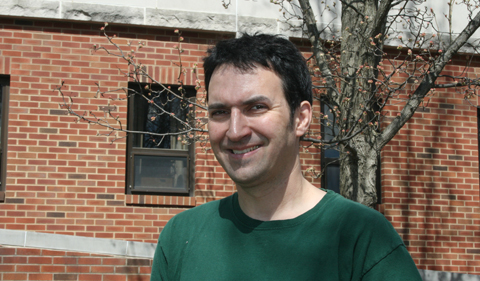
Cates Harman
By Cates Harman
(B.S. Physics, Class of 2016)
During the summer of 2015, I had the opportunity to intern in Physics & Astronomy with Dr. Justin Frantz, who specializes in nuclear physics, specifically the study of quantum chromodynamics. Among other things, Dr. Frantz is working on measurements of high-energy helium + gold collisions to study π-zero “jet” correlations, which is the project I was tasked with.
Specifically, I worked on modifying a program called “Split Simple,” which is meant to use real data from the Relativistic Heavy Ion Collider in Brookhaven, NY, to graph various data extracted from these collisions. My job was to modify the program – originally written by Dr. Frantz’s graduate student Bing Xia (’14 Ph.D.), for proton + proton collisions and most recently deuteron + gold collisions – to work for helium + gold collisions. The work was centered on writing code and debugging programs, a long but ultimately rewarding process.
The research required me to learn a ton of new things about particle physics, and even more things about programming. The program we used to run the program is called Root, a program designed for data analysis, specifically for particle physics. While it used the C++ language, it was very much foreign to me at the beginning of the internship. Now, however, I am pretty familiar with it and can efficiently read a Root program and understand it.
I plan to continue with this research throughout my senior year, and write an undergraduate thesis. We have seen some of the results from our experiment and the outcome looks promising, but the resolution is still too low to have a definitive answer. I am looking forward to completing the research and learning even more about particle physics.
Cates Harman – 2015 Intern with Dr. Justin Frantz – senior at Ohio University – College of Arts & Sciences – physics major



















Comments